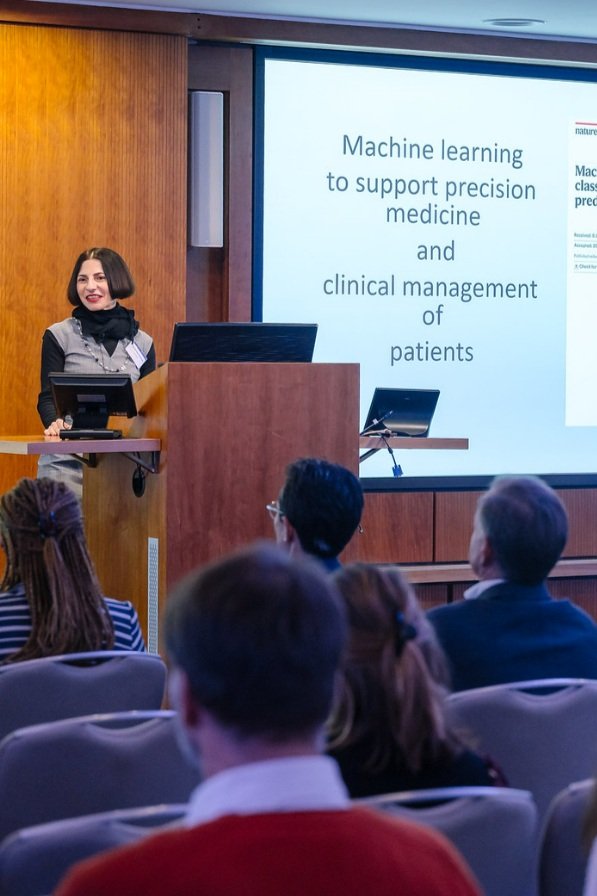The Future of UK Regulation: Driving innovation in the Life Sciences
BIA Event October 2023 - London, UK
Ian Waterson
Principal Consultant
Nemma Glayini
Consultant
Introduction
This October, Scendea’s Principal Consultant, Ian Waterson, had the pleasure of attending the UK BioIndustry Association (BIA) conference on The Future of UK Regulation: Driving innovation in the Life Sciences.
The meeting brought together MHRA senior leadership, key decision-makers, international stakeholders and the regulatory community across the life sciences ecosystem, to discuss the latest developments in life sciences and to tackle insightful topics, at a time of significant change, challenge and opportunity.
The conference focussed on three main areas:
1. Getting UK clinical trials back on track
2. The new international recognition framework for medicines vs the national marketing authorisation (MA) procedure
3. Regulation of novel technologies
The conference opened with an introductory speech by Steve Bates OBE, CEO BIA, followed by a keynote address by Dr June Raine DBE, Chief Executive of the MHRA.
The MHRA is redesigning and looking to new ways of working with a vision to become a world-leading, enabling, sovereign regulator. Some of the aims will be to enable innovation and facilitate timely access by deploying expertise and resources in a risk proportionate way.
Key Messages
The Clinical Trials Initials and Amendments backlog is now cleared. Stipulated regulatory timelines for Clinical Trials Initials Amendments will now be followed.
Strengthen UK medical device regulations to:
Keep patients safe
Make the UK the place to develop and introduce innovative devices
Address health inequalities and mitigate biases through lifecycles
Ensure proportionate regulation which builds on wider global standards
Set world-leading standards and build UKCA Mark as global exemplar
Reference was also made to the Pro-innovation Regulation of Technologies Review.
This report follows the publication of reports on digital technologies and green industries as part of the Pro-Innovation Regulation of Technologies Review. Extensive engagement took place across government, regulators, industry, and academic experts to identify actions that could realistically resolve problems in a short time scale.
The review explores:
Overarching barriers to new technologies faced by regulators and those who interact with regulation in numerous sub-sectors within the life sciences
Opportunities for changes in the regulation of specific technologies
The report makes recommendations on:
Common regulatory challenges that impact innovation and growth across multiple areas of life sciences
Regulation of medicines, advanced therapeutics, and medical devices in the UK, including with regard to the MHRA and the wider regulatory system through the National Institute for Health and Care Excellence (NICE)
Opportunities for better regulation in the life sciences beyond human health, including novel foods, waste valorisation and cell-free systems.
In terms of personalised immunotherapy, the Commission on Human Medicines (CHM) now have a group specifically focussing on this area and will be looking at whether or not changes in regulations will be required, for example, authorisation based on a ‘platform’ rather than a ‘product’.
MHRA are also forming partnerships with the US, EU, and Japan. The European Commission (EC) Decision Reliance Procedure (ECDRP) will close at the end of January 2024 and will move to an International Regulation Procedure. Other partnerships include the ACCESS consortium, a medium-sized coalition of regulatory authorities (Australia, Canada, Singapore, Switzerland and the UK) that work together to promote greater regulatory collaboration and alignment of regulatory requirements; and Project Orbis, a programme coordinated by the FDA to review and approve promising cancer drugs helping patients access treatments faster. It involves the regulatory authorities of the ACCESS consortium plus Brazil and Israel.
Other work involves international coalitions regarding medical devices with ICH work regarding Good Clinical Practice (GCP).
Overall, the MHRA is going through the process of reforming from a ‘regulatory watchdog’ to a ‘regulatory enabler’.
Getting UK Clinical Trials Back on Track
Lord O’Shaughnessy presented information showing that the MHRA is down on UK competitiveness, with the number of Clinical Trials falling by 41% since 2017/2018. The UK also fell down national rankings for Phase II and III trials, falling from 2nd to 6th and from 4th to 10th, respectively. The main issue for this was the inability to set up trials quickly in the UK. The UK are now the second lowest place in European rankings. The main points were:
Look to other examples in Europe such as Spain, where progress has been made in later-stage Clinical Trials
Think about incentives such as those offered by Australia for early-stage Clinical Trials
Funding should not be based on postcode, but disease driven
The National Institute for Health and Care Research (NIHR) set out five overarching themes relating to the future of UK Clinical Research delivery:
A sustainable and supported research workforce
Clinical research embedded in the NHS
People-centred research
Streamlined, efficient and innovative research
Research enabled by data and digital tools
The MHRA are to streamline clinical trial approvals, learn more here.
The Health and Social Care Secretary was quoted as saying that “These changes will help speed up clinical trials, without compromising on safety, and encourage the development of new and better medicines for patients. They come after the government announced additional funding of £10 million for the MHRA to accelerate the delivery of cutting-edge treatments including cancer vaccines”.
Innovative Licensing and Access Pathway (ILAP) and the new Innovative Devices Access Pathway (IDAP) are designed to accelerate the development of cost-effective medicines and medical devices and their integration into the UK market. These processes should be reviewed to determine if they are working and, if not, look at what can be done differently. Learn more here.
The future of regulation should embed support for research culture, improve clinical practice, reduce healthcare costs, and drive policy change. Look towards conducting more clinical trials in pregnancy and support the work from ‘Bench to Bedside’ and ‘Campus to Clinic’.
The MHRA also discussed the regulatory measures to speed up Clinical Trials. They are working to boost resources in clinical trials assessment teams across all three assessment disciplines (medical, non-clinical and pharmaceutical) and supporting functions, including vital pre-submission scientific advice. They are aiming to sustain strategic and 1-1 communications on clinical trials and application progress in a timely and transparent manner. This will involve a system-wide collaboration addressing the following:
Risk-proportionate approach – high/medium/low
Streamlined risk-proportionate process for clinical applications according to trial phase
Triage for clinical trial initials
Triage for clinical trial amendments
Upstream guidance to avoid grounds for non-approval
Approach for low-risk trials
From a Health Research Authority (HRA) perspective, they have been implementing a combined review, a Fast Track Research Ethics Committee (REC) review, a National Contract Value review, supporting decent models, advising clinical research network CRN on data-enabled recruitment, and exploring people-centred clinical research. From the 1st of October 2023, a new unmodifiable financial appendix mandate for use in commercial contracts and removal of local contract-value negotiation for commercial research came into place, removing the need for local negotiation, stopping debates over financial schedules, and reducing site set-up time. There is PI oversight and governance for decentralised trials. Ongoing work includes:
Participant information sheet principles and standards
Future clinical trial legislation
Equality and diversity
Identifying and contacting patients about research
Co-lead work on study set-up delays other than costing.
The New International Recognition Framework for Medicines vs The National MA Procedure
The UK is now looking at new routes to access for innovations. As well as National Applications, ACCESS consortium and Project Orbis, the MHRA are introducing the International Recognition Procedure (IRP) to replace the ECDRP, which will end on 31 December 2023. This means that early approval decisions that are made globally will be recognised, allowing UK patients swift access to approved medicines and vaccines. It will also reduce industry’s workload by eliminating duplication of work around the world, whilst allowing the MHRA to manage its resources more effectively. Collaborations with NIHR, UKRI, HRA, Universities and the Association of Medical Research Charities (AMRC) are aimed at improving the regulatory process in the UK, drawing on a science base to provide support and advice through EAMS, ILAP and Innovation Office. Alignment and collaboration on priorities will be key through joint horizon scanning and information sharing.
Due to health service pressures, shared decision-making, growth in innovation and vast amounts of data, NICE is transforming in 3 ways:
to become more relevant by focussing on what matters most;
to be more timely and useable by providing useful and useable advice
to have greater demonstrable impact by learning from data and implementation.
The purpose remains the same: to help practitioners and commissioners get the best care to people fast, while ensuring value for the taxpayer. The challenges faced include 1) understanding the pipeline: NICE process requires early notification of expected regulatory timings to enable final publication and patient access, within 90 days of MA; 2) Less mature evidence: earlier licensing may result in less mature evidence for NICE appraisal, leading to increases in company requests for delayed submission dates, increased need for managed access and potentially more negative recommendations; 3) Responding to a potential surge in UK Marketing Authorisations. Ultimately, to fully exploit the opportunities from the new regulatory recognition routes, redesign of the medicines access pathway may be needed, for example, refreshed ILAP, further development of Rapid Entry to Managed Access (NICE and NHS England collaboration), further work by NHS England, NICE and MHRA on aligned pathways, and continuing to enhance horizon scanning processes to facilitate topic selection and healthcare system planning.
The presentation by Swissmedic described the types of collaborative regulations adopted in Switzerland. They have multilateral international collaborations (ACCESS, ORBIS etc.) as well as with the International Coalition of Medicines Regulatory Authorities (ICMRA), ICH, IMDRF etc. Medicine regulation is governed by the Therapeutics Product Act Article 13 and Article 14abis-quarter., with mutual recognition agreements in place for GMP and PIC/S. Article 13 allows medicinal products and procedures authorised in foreign countries that have equivalent medicinal product control, to be approved. This applies to new authorisation applications for known active substances, biosimilars new active substances and their additional indications (provided certain criteria are fulfilled), applications for extensions, and variations. Article 14abis-quarter applies to medicinal products with long-standing use in other countries (or in one of the Swiss cantons). Swissmedic will take into consideration the results of the assessments carried out by the reference authority. Mutual Recognition Agreements covering, for example, inspection results in the area of Good Manufacturing Practices (GMP) may also be accepted.
FDA presented a focus on their Europe Office in Belgium, whose mission is to foster collaboration, and share knowledge and information with FDA’s counterpart regulatory authorities throughout the region. As part of that, the FDA has set up bilateral activities with the MHRA through a confidentiality commitment (CC) whereby some non-public information can be shared and has been in place since 2005, with a ‘Super CC’ since 2017: Confidentiality Commitments | FDA. In addition, a UK-US Mutual Recognition Agreement (MRA) was put in place on 1 November 2017 for human drugs and on 24 September 2021 for veterinary drugs: Mutual Recognition Agreements (MRA) | FDA. The MRA allows the FDA to rely on information from drug inspections conducted within each other’s borders; yields greater efficiencies for U.S. and foreign regulatory systems by avoiding duplication of inspections; and enables reallocation of resources towards inspection of drug manufacturing facilities with potentially higher public health risks across the globe. The FDA are also involved in ‘International “Clusters”’, where groups are formed around topical areas of interest (e.g. Pharmacovigilance, Generics, Pregnancy & Lactation, with a regular cadence of meetings to facilitate timely information exchange.
Regulation of Novel Technologies
The final session focussed on the regulation of new technologies. In the Autumn Statement 2022, the Chancellor announced a Pro-innovation Regulation of Technologies Review to advise how the UK can better regulate emerging technologies. This is a call for action for regulatory reform to unlock innovation in digital technologies, life sciences, and green industries, as well as opportunities to optimise a forward-looking approach to horizon scanning for emerging technologies, ensuring the UK is at the forefront of technological innovation. This has a high potential to attract investment and enable the growth of UK-based businesses and the economy. Overarching recommendations include early engagement, internationally aligned timelines, skills pipeline across those regulators to build expertise in the long-term, secondment system between regulators and industry, CERSIs: stronger partnerships with the growing number of centres for both engineering biology and healthcare, pay levers, and data sharing across regulators.
Scendea’s very own Dr Maria Beatrice Panico described the use of artificial intelligence (AI) in drug discovery and clinical development and the regulatory impact. An example provided at early-stage development was the use of the AlphaFold Protein Structure Database, an AI system developed by DeepMind that predicts a protein’s 3D structure from its amino acid sequence: AlphaFold Protein Structure Database. Benevolent AI was used to identify drugs for repurposing to treat COVID-19. COVID-19 sequencing plus molecular modelling based on genomes of related virus proteins was combined with machine learning from structure literature to identify baricitinib as a potential candidate, which led to WHO’s living guidance recommending baricitinib for patients with severe or critical COVID-19 in combination with corticosteroids. Machine learning has also been described for genetics-based classification and treatment response prediction in cancer of unknown primary (CUP). An interesting aspect for Clinical trials could be the use of ‘digital twins’ where a patient’s digital twin is used to forecast the outcome and could be used as the patient’s own control. Medical wearable and digital tools can also be used with AI to identify patterns, trends, and associations. AI could also be incorporated into pharmacovigilance, particularly in relation to medical terms and conditions. For AI developers, a rigorous scientific method is needed to ensure AI is ‘FAIR’ (Findable, Accessible, Interoperable, Re-usable) and explainable, i.e. establishing a set of tools to understand how AI makes decisions/predictions. For regulators, clear guidance is needed, with international harmonisation and a creative approach (e.g. remove silos mentality, assess benefit-risk balance at a multidisciplinary level.
Interesting times ahead!
Do you need support with your product development and regulatory activities?
Get in touch to speak to a member of our team






